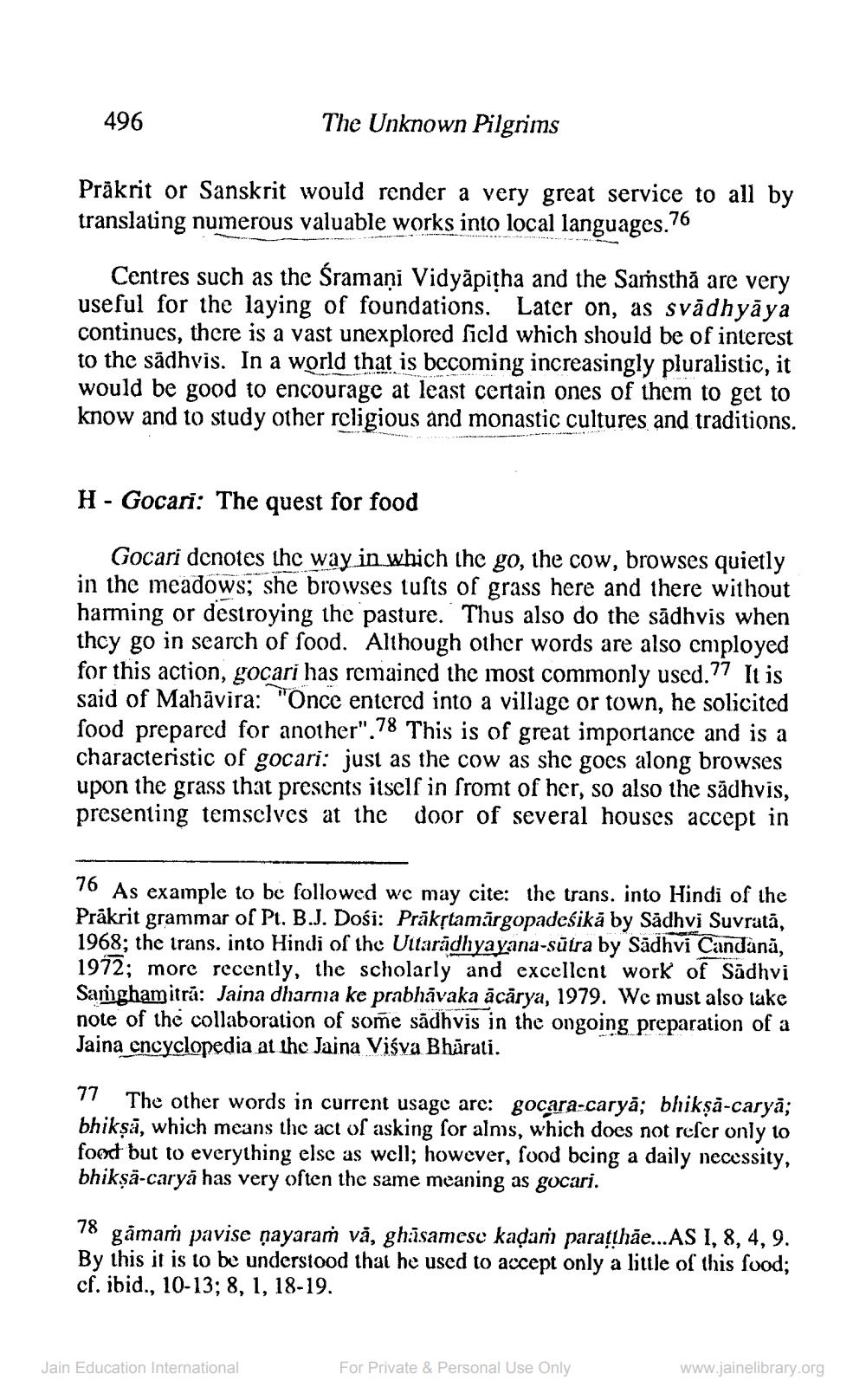________________
496
The Unknown Pilgrims
Prākrit or Sanskrit would render a very great service to all by translating numerous valuable works into local languages. 76
Centres such as the Śramaņi Vidyapitha and the Saṁsthă are very useful for the laying of foundations. Later on, as svādhyāya continues, there is a vast unexplored field which should be of interest to the sādhvis. In a world that is becoming increasingly pluralistic, it would be good to encourage at least certain ones of them to get to know and to study other religious and monastic cultures and traditions.
H - Gocari: The quest for food
Gocari denotes the way in which the go, the cow, browses quietly in the meadows; she browses tufts of grass here and there without harming or destroying the pasture. Thus also do the sādhvis when thcy go in search of food. Although other words are also employed for this action, gocari has remained the most commonly used. 77 It is said of Mahāvira: "Once entered into a village or town, he solicited food prepared for another". 78 This is of great importance and is a characteristic of gocari: just as the cow as she goes along browses upon the grass that presents itself in fromt of her, so also the sādhvis, presenting temselves at the door of several houses accept in
76 As example to be followed we may cite: the trans. into Hindi of the Prakrit grammar of Pt. B.J. Dośi: Prākstamārgopadeśikā by Sadhvi Suvratā, 1968; the trans. into Hindi of the Uttaradhyayana-sūtra by Sādhvi Candànă, 1972; more recently, the scholarly and excellent work of Sãdhvi Samghamitra: Jaina dharma ke prabhāvaka ācārya, 1979. We must also take note of the collaboration of some sādhvis in the ongoing preparation of a Jaina encyclopedia at the Jaina Viśva Bhārati.
77 The other words in current usage are: gocara-caryā; bhikṣa-caryā;
sā, which means the act of asking for alns, which does not reser only to food but to everything else as well; however, food being a daily necessity, bhikṣā-caryā has very often the same meaning as gocari.
78 gåmam pavise şayaraṁ vå, ghisamese kadam paratthāe...AS I, 8, 4, 9. By this it is to be understood that he used to accept only a little of this food; cf. ibid., 10-13; 8, 1, 18-19.
Jain Education International
For Private & Personal Use Only
www.jainelibrary.org




